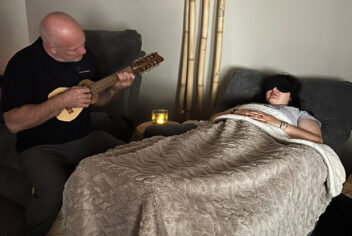Following the 2018 decision in Dynamex Operations West, Inc. v. Superior Court, which established a three-part ABC test to determine coverage under the California Wage Orders — regulations from which many higher-level and higher-paid workers are exempt — Assembly Bill 5 now applies the ABC test to determine worker eligibility for inclusion in the workers compensation and unemployment insurance systems.
All the employee rights found in the California Labor Code, including things such as paid sick leave, business expense reimbursement, and rules governing the frequency and timing of the payment of wages, are now determined by the new statute.
Assembly Bill 5.
Upon signing AB5 on Sept. 18, 2019, Gov. Gavin Newsom heralded it as “landmark legislation for workers and our economy,” recognizing that the “hollowing out of our middle class has been 40 years in the making, and the need to create lasting economic security for our workforce demands action.”
While many believe this legislation was solely targeted at gig-economy employers, this new law impacts traditional business, including nonprofits, which have increasingly hired contractors to perform occasional or specialized services such as janitorial, IT, trainers, social workers, and drivers.
Under both the Dynamex decision and AB5, workers are presumed to be an employee unless the hiring entity satisfies each of the elements in the three-factor ABC test:
A: The person is free from the control and direction of the hiring entity in connection with the performance of the work, both under the contract for the performance of the work and in fact.
B: The person performs work that is outside the usual course of the hiring entity’s business.
C: The person is customarily engaged in an independently established trade, occupation, or business of the same nature as that involved in the work performed.
Is your organization affected? Review your mission statement.
If you are familiar with classification issues, you have no problem determining compliance with prong A of the test, that which requires freedom from control and direction.
Prongs B & C of the test are new and more difficult to satisfy unless the worker is truly in an independent business working for many entities and providing work separate and distinct from the contracting entity.
For a nonprofit, the place to start this analysis is by reviewing your mission statement. If the worker is engaged in work furthering that mission, prong B of the test cannot be met.
For example, if the nonprofit is a medical facility his mission statement involves providing care to patients/clients, a nurse or speech therapist would not likely meet prong B of the test.
Making these new standards all the more concerning is the fact that, consistent with the holding in Dynamex, AB5 specifies that the classification standards should be applied retroactively to existing workers.
Review the ABC test exemptions.
AB5 exempts from the ABC test certain professions and business-to-business relationships.
Amendments to the bill clarify that, for certain professional occupations, the test for determining whether a worker is properly classified as an independent contractor would continue to be governed by the California Supreme Court’s 1989 decision in S. G. Borello & Sons, Inc. v. Department of Industrial Relations, which established an easier to satisfy multi-factor analysis.
Those professional occupations include:
- Physicians & Surgeons
- Dentists
- Podiatrists
- Psychologists
- Veterinarians
- Lawyers
- Architects
- Engineers
- Accountants
Also specifically covered by the Borello test are workers engaged in certain professional services, including these that affect the nonprofit sector:
- Creative Marketing Professionals
- HR Administrators
- Graphic Designers
- Grant Writers
- Fine Artists
As well as certain other workers such as:
- Freelance Writers
- Photographers
- Cartoonists
- Photojournalists
- Direct Salespersons
This does not mean that all workers in these classifications can automatically be classified as contractors; but rather that the employer can analyze the contractor classification using the easier-to-satisfy multi-factor Borello test, rather than the ABC test.
Given that gig-economy titans Uber, Lyft, and DoorDash have vowed to challenge this legislation in court as well as potentially by gaining signatures for a proposition to appear on the ballot, this is not the last you will hear of the viability of the ABC test.
For now, California nonprofits are encouraged to review the classification of any worker as a contractor to evaluate compliance with AB5, and discuss the impact of AB5 with your insurance broker to ensure you have the appropriate coverage for your workers.
Remember that these classification standards are to be applied retroactively and that courts applying the standards will look to the intent of AB5, expanding the benefits available to employees by shrinking the size of the proverbial needle.
Still have questions? Reach out to NIA.
If you’re a Nonprofits Insurance Alliance (NIA) member with Directors and Officers (D&O) insurance including Employment Practices Liability coverage, you can request a free employment consultation from one of our Labor & Employment Risk Managers (LERMS) to discuss the impact of this developing law on your operations.
Nonprofits who want to learn more about this topic you can listen to a recorded webinar on the Classification of Workers as Independent Contractors in California. The webinar covers not only the ABC test used in California but also discuss the federal employment laws that affect worker classification. Nonprofits can register for this training, which is free for NIA members, with this link.





